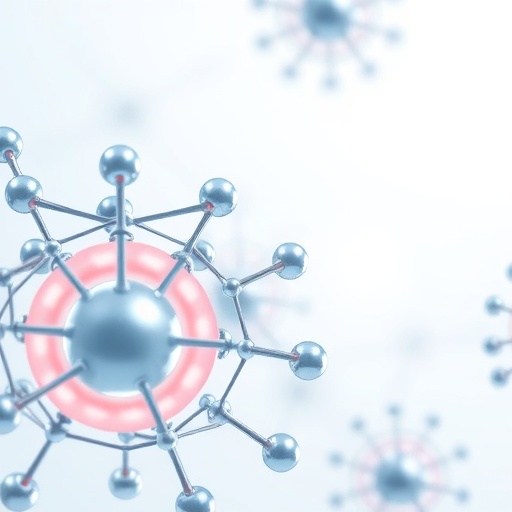In the realm of medicinal science, a transformative paradigm is unfolding with the emergence of carrier-free nanomedicines. This innovative approach stands at the crossroads of nanotechnology and pharmacology, aimed at enhancing drug delivery efficacy while circumventing the challenges often posed by traditional drug carriers. Recent work by Ma, Yang, and Park showcases critical advancements and the hurdles yet to be overcome in this burgeoning field of study, focusing on how carrier-free nanomedicines could reshape therapies for a multitude of diseases.
Drug delivery systems have long relied on various carriers, such as liposomes, polymers, and micelles, to achieve desired therapeutic outcomes. While these carrier systems have proven effective, they often come with inherent limitations such as immunogenicity, the potential to degrade before reaching target tissues, and the complexities involved in manufacturing. Carrier-free nanomedicines offer a potential solution by using nanoparticles that can encapsulate therapeutic agents without the need for additional carrier materials, which not only simplifies the formulation but may also enhance bioavailability and biological activity.
Studies have demonstrated that the inherent properties of nanomaterials can be manipulated to achieve desirable characteristics, such as improved circulation times and targeted delivery to tumors or inflammatory sites. These nanoparticles can be engineered to release drugs in response to specific stimuli, including pH levels, light, or temperature, thus ensuring that the therapeutic agent is delivered precisely where it’s needed most. This precise targeting is essential in fields like oncology, where minimizing off-target effects can significantly enhance treatment efficacy and reduce adverse effects on healthy tissues.
The potential of carrier-free nanomedicines is particularly significant in the delivery of RNA-based therapies, such as small interfering RNA (siRNA) and messenger RNA (mRNA). The stability and efficacy of these types of drugs often hinge on their delivery mechanisms, making carrier-free systems a promising alternative. By facilitating better cellular uptake and overcoming barriers such as endosomal entrapment, carrier-free nanomedicines can improve the therapeutic output of RNA-based treatments, holding immense promise for diseases that were previously difficult to treat, including various cancers and genetic disorders.
However, despite the promise of carrier-free nanomedicines, substantial challenges remain. One of the primary hurdles is the reproducibility of nanoparticles during the manufacturing process. Achieving consistent size, shape, and distribution of nanoparticles is critical for ensuring their safety and efficacy in clinical applications. Moreover, regulatory bodies require robust data demonstrating the safety and efficacy profiles of these formulations, which necessitates extensive experimentation and optimization.
Another significant challenge lies in understanding how these nanomedicines interact with biological systems. The biodistribution, metabolism, and elimination of carrier-free nanoparticles are critical factors that determine their therapeutic effectiveness and safety. Researchers must conduct in-depth studies to elucidate these interactions, as they directly impact the design and development of future therapeutics. Potential immunogenic responses associated with nanoparticles also raise concerns regarding patient safety, necessitating rigorous testing protocols to evaluate both short-term and long-term safety outcomes.
Furthermore, the financial implications of developing carrier-free nanomedicines cannot be overlooked. The initial investment required for research, development, and clinical trials can be substantial. This poses a significant barrier for smaller companies and academic institutions trying to bring innovative therapies to market. Collaborations between academia, industry, and regulatory agencies may be key to overcoming these financial hurdles and ensuring that promising carrier-free nanomedicines can be transitioned into clinical applications.
Looking ahead, the continued evolution of carrier-free nanomedicines will likely depend on interdisciplinary collaboration. Partnerships between biologists, materials scientists, and pharmacologists can facilitate the exchange of knowledge and resources necessary to drive innovation in this field. Such collaborations could lead to the development of novel materials, improved characterization techniques, and better preclinical models that accurately predict human responses to these advanced therapeutics.
The incorporation of machine learning and artificial intelligence into the design and optimization of carrier-free nanomedicines represents another exciting frontier. Computational models can help predict how modifications to nanoparticles might influence their behavior in biological contexts, expediting the discovery process and enabling researchers to identify the most promising formulations more efficiently. By harnessing these cutting-edge technologies, the pace of innovation in nanomedicine can accelerate dramatically.
As the understanding of nanomedicine continues to advance, consumer awareness and acceptance will play a crucial role in the successful integration of these therapies into healthcare. Public education on the benefits and safety of carrier-free systems is vital for building trust and enthusiasm around nanomedicines. Initiatives that transparently communicate the science behind these therapies and their therapeutic potential can diminish fears and misconceptions, paving the way for acceptance by healthcare practitioners and patients alike.
In summary, the field of carrier-free nanomedicines represents a thrilling intersection of science, innovation, and clinical application. With ongoing research highlighting both the potentials and the challenges, the path ahead requires a concerted effort from the scientific community, regulatory agencies, and the public. As breakthroughs continue to unfold, the promise of carrier-free nanomedicines may soon translate into a new arsenal of therapies that revolutionize treatment paradigms for a diverse range of diseases, ultimately enhancing patient outcomes and quality of life.
The future appears bright for carrier-free nanomedicines; however, attention must now pivot towards addressing remaining challenges that could hinder their development and implementation. Through sustained innovation, collaboration, and education, the field holds the potential to create transformative changes in how we approach drug delivery, ensuring that patients benefit from the advancements of today’s cutting-edge science.
Subject of Research: Carrier-free nanomedicines
Article Title: Recent development and challenges in carrier-free nanomedicines
Article References:
Ma, G., Yang, SB. & Park, J. Recent development and challenges in carrier-free nanomedicines. J. Pharm. Investig. (2025). https://doi.org/10.1007/s40005-025-00768-0
Image Credits: AI Generated
DOI:
Keywords: nanomedicine, drug delivery, carrier-free, nanoparticles, RNA-based therapies, manufacturing challenges, immunogenicity, biocompatibility, interdisciplinary collaboration, machine learning, public consciousness.




